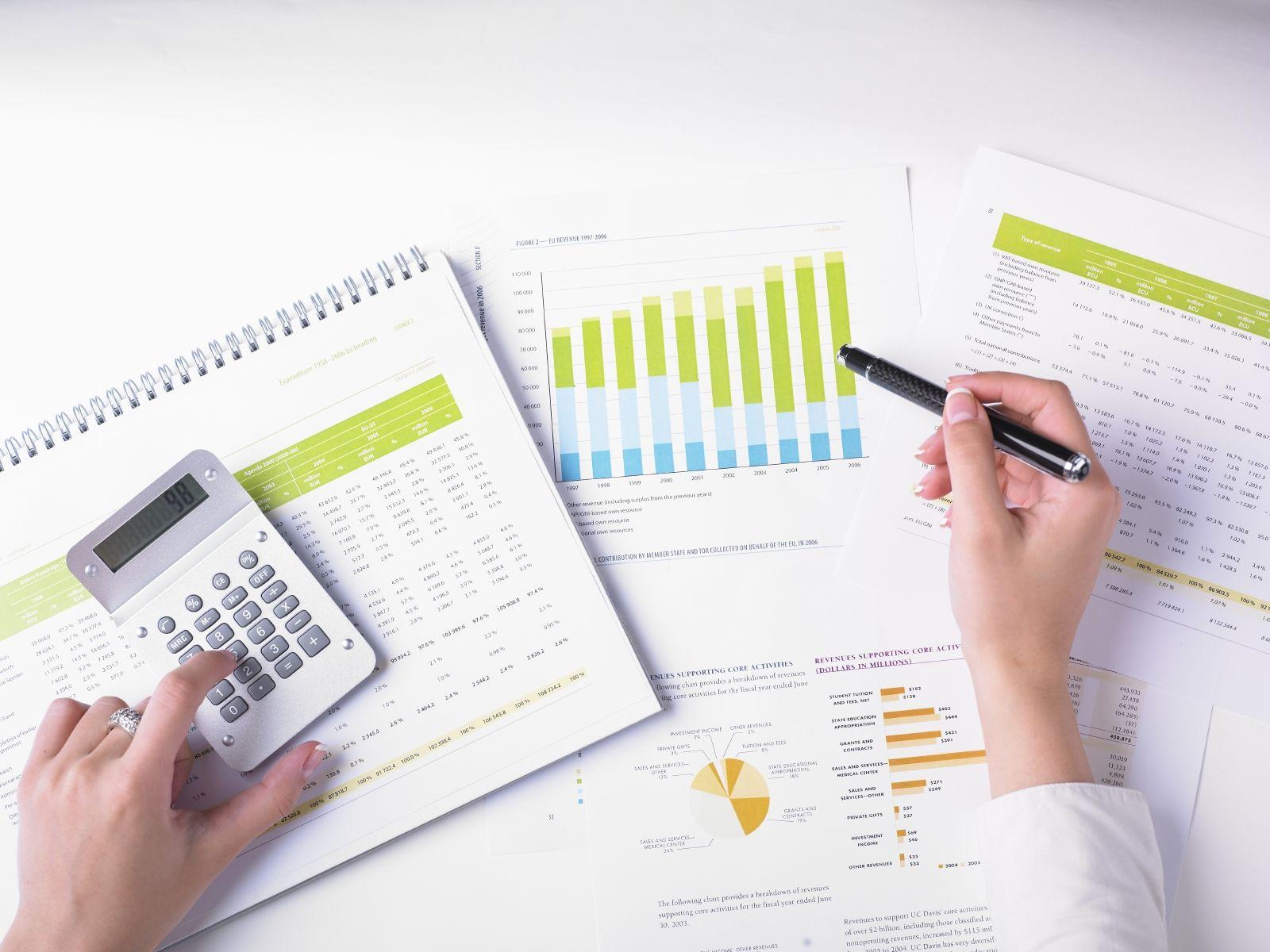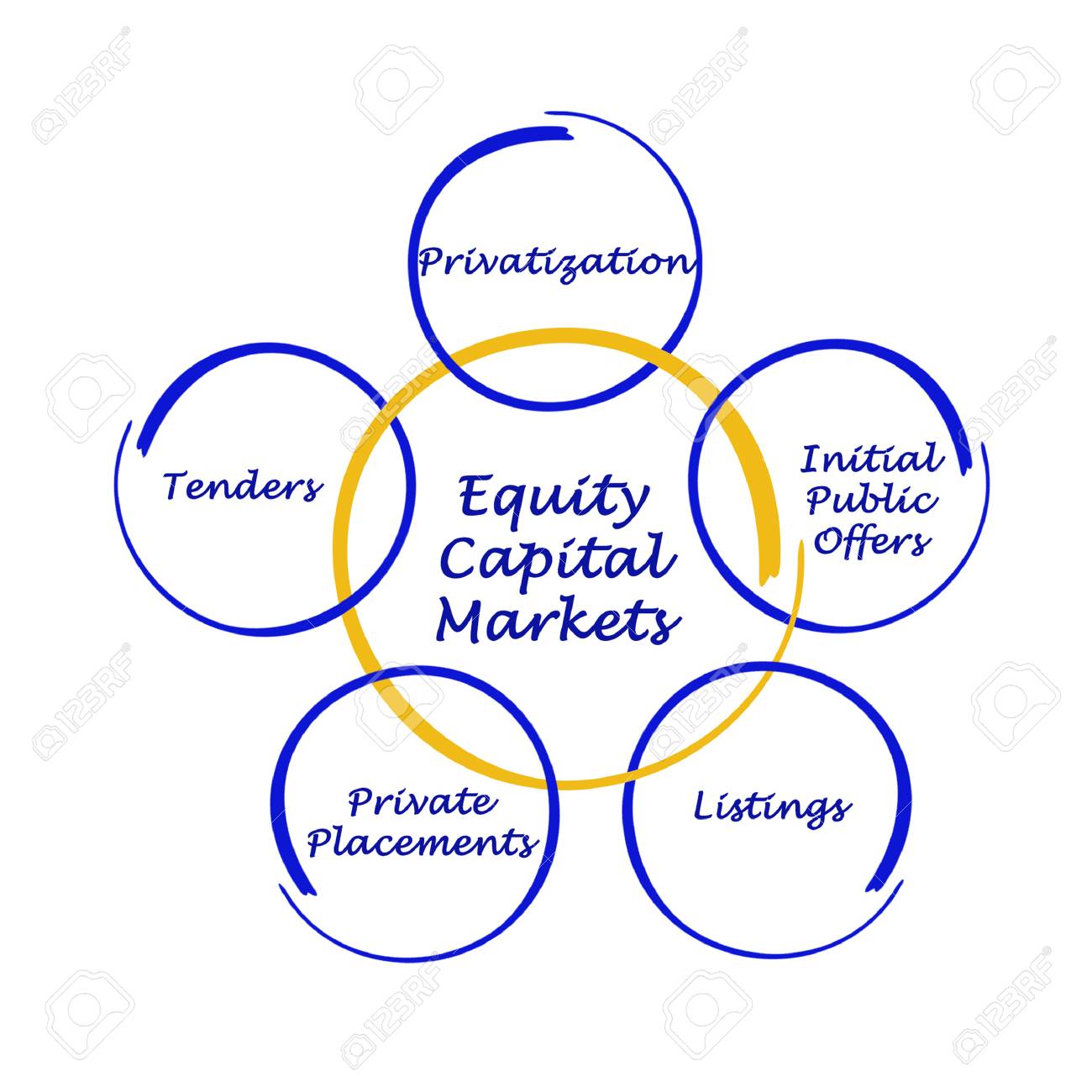

Finance
What Is Operational Accounting
Published: October 10, 2023
Discover the importance of operational accounting in finance. Gain insights into the role it plays in managing financial transactions and optimizing business operations.
(Many of the links in this article redirect to a specific reviewed product. Your purchase of these products through affiliate links helps to generate commission for LiveWell, at no extra cost. Learn more)
Table of Contents
- Introduction
- Definition of Operational Accounting
- Importance of Operational Accounting
- Key Components of Operational Accounting
- Operational Accounting vs. Financial Accounting
- Tools and Techniques used in Operational Accounting
- Benefits of implementing Operational Accounting
- Challenges faced in Operational Accounting
- Best Practices for Operational Accounting
- Conclusion
Introduction
Welcome to the world of operational accounting! In the financial realm, accounting plays a crucial role in ensuring the smooth and efficient functioning of businesses. However, within the realm of accounting, there are various branches, each with its own focus and purpose. One such branch is operational accounting, which holds tremendous significance in maintaining the financial health of an organization.
Operational accounting can be defined as a specialized area of accounting that is primarily concerned with the day-to-day financial activities and processes within a company. It focuses on the costs, revenue, and expenses incurred in relation to the operational activities of the organization. Through meticulous monitoring and analysis, operational accounting provides valuable insights into the financial performance and operational efficiency of a business.
As businesses operate in an increasingly complex and dynamic environment, the need for effective operational accounting practices becomes even more critical. Operational accounting ensures that companies have accurate, real-time financial information to make informed decisions, identify areas of improvement, and optimize resource allocation.
This article will delve into the intricacies of operational accounting, exploring its importance, key components, tools and techniques, and the benefits it offers to businesses. We will also discuss the challenges faced in implementing operational accounting and highlight some best practices that can help organizations maximize its potential.
So, whether you are a finance professional, a business owner, or simply interested in understanding the inner workings of operational accounting, read on to gain a comprehensive understanding of this vital aspect of financial management.
Definition of Operational Accounting
Operational accounting, also known as management accounting, refers to the process of gathering, analyzing, and interpreting financial data related to the day-to-day operations of a business. It focuses on providing internal stakeholders, such as managers and executives, with timely and accurate information to guide decision-making and improve operational efficiency.
Unlike financial accounting, which is primarily concerned with external reporting and compliance with regulatory requirements, operational accounting is more concerned with the internal workings of a company. It looks beyond the traditional financial statements and delves into the details of operational processes, costs, and performance metrics.
The key objective of operational accounting is to provide insights and support for strategic decision-making. By analyzing operational data, it helps businesses understand the financial impact of their actions and make better-informed decisions that drive the organization towards its goals. Operational accounting involves tracking and analyzing various parameters, such as production costs, inventory management, pricing strategy, resource allocation, and performance measurement.
To effectively carry out operational accounting, organizations need to establish robust systems and processes for collecting and organizing financial data. They must categorize expenses, revenues, and investments according to operational activities, departments, or products. By doing so, businesses can gain a detailed understanding of the financial implications of different operational activities.
Moreover, operational accounting involves the use of both financial and non-financial data. In addition to monetary metrics, it incorporates operational metrics such as units produced, labor hours, customer satisfaction scores, and process cycle times. The integration of financial and non-financial data enables a holistic view of the business’s operations and facilitates more comprehensive analysis and decision-making.
Overall, operational accounting serves as a valuable tool for organizations to monitor and optimize their operational performance. It provides the necessary insights into the financial impact of operational decisions, helps identify areas for improvement, and supports the formulation and execution of effective business strategies.
Importance of Operational Accounting
Operational accounting plays a crucial role in the financial management of businesses. Its importance lies in the valuable insights it provides to enhance operational efficiency, optimize costs, and guide strategic decision-making. Here are some key reasons why operational accounting is of utmost importance:
- Performance Evaluation: Operational accounting allows businesses to assess their operational performance by tracking key metrics such as costs, revenues, and profitability. By comparing actual performance against targets or industry benchmarks, organizations can identify areas of improvement and take corrective actions. This enables companies to enhance their overall efficiency and competitiveness.
- Cost Control: One of the primary objectives of operational accounting is to control costs. By analyzing and monitoring various cost drivers, such as raw materials, labor, and overhead expenses, businesses can identify opportunities to reduce costs and improve their bottom line. Cost control strategies can include implementing lean practices, renegotiating supplier contracts, and optimizing production processes.
- Resource Allocation: Effective resource allocation is crucial for maximizing operational efficiency. Operational accounting provides insights into the utilization of resources, such as labor, materials, and machinery. By understanding resource allocation patterns, companies can make informed decisions about where to allocate resources to achieve the greatest impact and return on investment.
- Decision Support: Operational accounting provides timely and accurate financial information to support decision-making at various levels within the organization. Managers and executives can use this information to evaluate different options, assess the financial implications, and choose the best course of action. Whether it’s launching a new product, expanding into new markets, or investing in infrastructure, operational accounting helps mitigate risks and enhances the chances of success.
- Process Improvement: Operational accounting helps businesses identify inefficiencies and bottlenecks within their operational processes. By analyzing data and performance metrics, organizations can pinpoint areas that require improvement and implement strategies to streamline operations. This can result in reduced lead times, improved quality, and increased customer satisfaction.
- Compliance and Risk Management: Operational accounting ensures that businesses comply with regulatory requirements and internal controls. It provides a framework for documenting and monitoring processes, keeping accurate financial records, and conducting periodic audits. By adhering to compliance standards, organizations mitigate the risk of penalties, legal issues, and reputational damage.
In summary, operational accounting is essential for businesses to assess performance, control costs, allocate resources effectively, support decision-making, drive process improvement, and ensure compliance. By focusing on the operational aspects of financial management, organizations can achieve sustainable growth and maintain their competitive edge in the market.
Key Components of Operational Accounting
Operational accounting encompasses several key components that are essential for successful financial management in businesses. These components provide the foundation for collecting, analyzing, and interpreting financial data related to operational activities. Here are the key components of operational accounting:
- Cost Accounting: Cost accounting is a fundamental component of operational accounting. It involves the identification, measurement, and allocation of costs associated with the production of goods or services. Cost accountants track and analyze various cost drivers, such as direct materials, labor, and overhead, to determine the total cost of production. This information is vital for pricing decisions, profitability analysis, and resource allocation.
- Budgeting and Forecasting: Budgeting and forecasting involve the preparation of financial plans and projections for future periods. Operational accounting plays a vital role in developing realistic budgets and forecasts by analyzing historical data, market trends, and operational factors. These budgets serve as a basis for monitoring performance, controlling costs, and setting financial targets.
- Variance Analysis: Variance analysis compares actual financial results with the budgeted or forecasted amounts. By analyzing the differences (variances), operational accountants can identify the reasons behind the variations and take appropriate action. Variance analysis helps to assess the effectiveness of operational strategies and highlight areas of improvement or concern.
- Performance Measurement: Performance measurement involves the assessment of key performance indicators (KPIs) to evaluate the effectiveness of operational activities. Operational accountants track and analyze operational metrics such as production volume, labor productivity, customer satisfaction, and quality standards. Performance measurement provides valuable insights into operational efficiency and helps identify areas for optimization.
- Inventory Management: Inventory management is a critical component of operational accounting, particularly for businesses that deal with physical products. It involves tracking inventory levels, monitoring inventory turnover, and analyzing the costs associated with holding inventory. Effective inventory management ensures adequate stock levels, minimizes carrying costs, and reduces the risk of stockouts or overstock situations.
- Activity-Based Costing (ABC): Activity-based costing is a method used in operational accounting to assign costs to specific activities or processes within an organization. ABC provides a more accurate picture of the costs incurred by different activities and helps in making informed decisions about resource allocation, pricing strategies, and process improvements. It enables businesses to focus on high-value activities and eliminate or optimize non-value-added activities.
- Performance Reporting: Performance reporting involves the preparation and communication of financial reports and analysis to stakeholders within the organization. Operational accountants generate reports that highlight key financial metrics, variances, and performance trends. These reports provide stakeholders with the information needed to make informed decisions and take necessary actions.
These key components of operational accounting work hand in hand to provide businesses with the necessary tools and information to optimize operational performance, control costs, and drive financial success.
Operational Accounting vs. Financial Accounting
While operational accounting and financial accounting are both branches of accounting, they serve different purposes and focus on distinct aspects of financial management. Understanding the differences between the two is essential for businesses to effectively utilize both disciplines. Here is a comparison of operational accounting and financial accounting:
- Purpose: The primary purpose of operational accounting is to provide internal stakeholders with timely and relevant financial information to support decision-making and enhance operational efficiency. It focuses on the day-to-day financial activities and operational performance of a business. On the other hand, financial accounting is primarily concerned with external reporting and providing accurate financial information to investors, regulators, and creditors. It focuses on ensuring compliance with accounting standards and presenting a true and fair view of a company’s financial position and performance.
- Scope: Operational accounting is more focused on the internal workings of a company, analyzing operational processes, costs, and performance metrics. It looks beyond the traditional financial statements and delves into the details of operational activities. Financial accounting, on the other hand, encompasses the preparation of financial statements and reports, including the balance sheet, income statement, and cash flow statement. It focuses on recording, summarizing, and reporting financial transactions based on generally accepted accounting principles (GAAP) or International Financial Reporting Standards (IFRS).
- Timeframe: Operational accounting provides real-time and up-to-date financial information to support operational decision-making. It involves the regular monitoring and analysis of financial data to identify trends, variances, and opportunities for improvement. Financial accounting, on the other hand, is more focused on historical financial data. It captures and reports financial transactions and events that have already occurred, typically on a quarterly or annual basis.
- Users: Operational accounting primarily serves internal stakeholders, such as managers, executives, and department heads. It provides them with the financial information needed to make informed decisions about resource allocation, pricing, process improvement, and strategic planning. Financial accounting, on the other hand, serves both internal and external stakeholders. Internal stakeholders use financial statements and reports for performance evaluation and decision-making, while external stakeholders, such as investors, creditors, and regulatory authorities, rely on financial statements for investment decisions, credit evaluations, and ensuring compliance.
- Data Analysis: Operational accounting involves analyzing both financial and non-financial data to provide a holistic view of a company’s operations. It incorporates operational metrics, such as production costs, customer satisfaction, and process cycle times, along with financial data. This allows for comprehensive analysis and decision-making. Financial accounting, on the other hand, focuses primarily on financial data, such as revenues, expenses, assets, and liabilities.
- Emphasis on Cost Control: Operational accounting places significant emphasis on cost control and optimization. It analyzes cost drivers, identifies areas of wastage, and suggests strategies for reducing costs and improving operational efficiency. Financial accounting, while still concerned with cost management, focuses more on accurately reporting costs and ensuring that they are accounted for properly according to accounting standards.
In summary, operational accounting and financial accounting serve different purposes within a business. Operational accounting focuses on providing internal stakeholders with real-time financial information to guide decision-making and improve operational efficiency. Financial accounting, on the other hand, is primarily concerned with external reporting and compliance with accounting standards. Both disciplines are vital for the overall financial management and success of an organization.
Tools and Techniques used in Operational Accounting
Operational accounting relies on a variety of tools and techniques to gather, analyze, and interpret financial data related to operational activities. These tools help businesses streamline processes, make informed decisions, and optimize operational performance. Here are some commonly used tools and techniques in operational accounting:
- Enterprise Resource Planning (ERP) Systems: ERP systems are robust software applications that integrate various aspects of a business, including finance, sales, inventory, and production. These systems automate and streamline processes, allowing for seamless data flow across different departments. With ERP systems, operational accountants can efficiently capture and analyze financial data, track costs, manage inventory, and generate real-time reports.
- Key Performance Indicators (KPIs): KPIs are measurable metrics that reflect the performance of specific operational activities or processes. Operational accountants use KPIs to monitor and assess the effectiveness of operational strategies and identify areas for improvement. Examples of KPIs include production costs per unit, customer satisfaction scores, on-time delivery rates, and inventory turnover ratio.
- Activity-Based Costing (ABC): Activity-Based Costing is a method used to assign costs to specific activities or processes within an organization. It involves identifying cost drivers, such as machine hours or labor hours, and allocating costs based on the actual consumption of resources. ABC provides more accurate cost information, enabling operational accountants to make informed decisions about pricing, resource allocation, and process improvement.
- Data Analytics: Data analytics tools enable operational accountants to analyze large volumes of financial and operational data. These tools use statistical techniques and algorithms to uncover patterns, trends, and insights. Data analytics helps identify cost-saving opportunities, optimize pricing strategies, forecast demand, and analyze customer behavior. It also enables the identification of anomalies or outliers that may require further investigation.
- Pricing Models: Pricing models are mathematical models used to determine the optimal price for a product or service. Operational accountants utilize pricing models to analyze costs, market conditions, customer demand, and competition to set prices that maximize profitability. These models consider factors such as fixed costs, variable costs, desired profit margins, and price elasticity of demand.
- Budgeting and Forecasting Tools: Operational accountants use budgeting and forecasting tools to create financial plans and projections. These tools facilitate the process of setting budgets, tracking performance against budgeted targets, and generating accurate forecasts. Budgeting and forecasting tools help businesses monitor expenses, analyze variances, and make data-driven decisions in line with their financial goals.
- Lean and Six Sigma Methodologies: Lean and Six Sigma are methodologies aimed at improving operational efficiency and reducing waste. Operational accountants apply these methodologies to identify and eliminate non-value-added activities, minimize defects and errors, streamline processes, and optimize resource allocation. Lean and Six Sigma tools, such as value stream mapping, process mapping, and root cause analysis, help uncover inefficiencies and drive continuous improvement.
These tools and techniques empower operational accountants to effectively collect, analyze, and interpret financial data, thereby supporting decision-making, optimizing costs, and enhancing operational performance.
Benefits of implementing Operational Accounting
Implementing operational accounting practices can yield numerous benefits for businesses. It provides valuable insights into operational performance, helps optimize costs, and enables informed decision-making. Here are several key benefits that organizations can expect to experience by implementing operational accounting:
- Improved Operational Efficiency: Operational accounting allows businesses to identify inefficiencies and bottlenecks within their operational processes. By analyzing financial data and operational metrics, organizations can streamline processes, eliminate waste, and improve overall efficiency. This leads to smoother operations, reduced lead times, improved productivity, and enhanced customer satisfaction.
- Optimized Cost Control: Effective cost control is crucial for the financial health of a business. Operational accounting facilitates detailed analysis of costs, allowing organizations to identify cost drivers, monitor expenses, and implement cost-saving strategies. By optimizing cost control, businesses can improve profitability, maximize resources, and remain competitive in the market.
- Enhanced Decision-Making: Operational accounting provides timely and accurate financial information to support decision-making at all levels of the organization. Managers and executives can rely on operational accounting data to evaluate different options, assess the financial impact, and make informed decisions. This results in better resource allocation, improved risk management, and more effective strategic planning.
- Improved Resource Allocation: Operational accounting provides insights into the utilization of resources such as labor, materials, and machinery. By understanding resource allocation patterns, businesses can optimize resource usage and minimize waste. This ensures that resources are allocated to activities that generate the most value, leading to improved productivity and profitability.
- Increased Profitability: By analyzing costs, pricing strategies, and operational performance, operational accounting helps businesses identify opportunities to increase profit margins. It enables organizations to set appropriate pricing levels, optimize product mix, and identify areas where costs can be reduced. This ultimately leads to improved profitability and financial success.
- Better Process Visibility and Control: Operational accounting provides visibility into operational processes, allowing businesses to closely monitor and control them. By tracking key performance indicators and analyzing operational data, organizations can identify deviations from desired standards or targets and take corrective action. This ensures that processes are effectively executed, risks are mitigated, and operational goals are achieved.
- Facilitates Compliance: Operational accounting plays a vital role in ensuring compliance with regulatory requirements and internal controls. It establishes processes for documenting financial transactions, maintaining accurate records, and conducting periodic audits. By adhering to compliance standards, businesses reduce the risk of penalties, legal issues, and reputational damage.
- Supports Continuous Improvement: Operational accounting encourages a culture of continuous improvement within organizations. By monitoring operational performance, analyzing data, and identifying areas for optimization, businesses can drive continuous improvement initiatives. This leads to ongoing advancements in processes, products, and services, ensuring long-term success and sustainability.
In summary, implementing operational accounting practices provides businesses with improved operational efficiency, enhanced cost control, better decision-making capabilities, optimized resource allocation, increased profitability, improved process visibility and control, compliance assurance, and the ability to drive continuous improvement initiatives. These benefits collectively contribute to the overall success and financial well-being of an organization.
Challenges faced in Operational Accounting
While operational accounting offers numerous benefits, organizations may also encounter several challenges in implementing and effectively utilizing it. Recognizing and addressing these challenges is crucial to ensure the smooth functioning and success of operational accounting practices. Here are some common challenges faced in operational accounting:
- Data Accuracy and Integrity: One of the main challenges in operational accounting is ensuring the accuracy and integrity of financial data. Errors in data entry or incomplete data can lead to inaccurate financial information and misinformed decision-making. It is essential to establish robust data collection processes and implement internal controls to minimize the risk of data inaccuracies.
- Data Integration: Operational accounting relies on the integration of financial and non-financial data from various sources. Consolidating data from different systems or departments can be a challenge, especially if data formats or systems are incompatible. Implementing an effective data integration strategy and utilizing appropriate software tools can help address this challenge.
- Complexity and Volume of Data: With growing business operations, the volume and complexity of financial data can increase significantly. Analyzing large volumes of data manually can be time-consuming and prone to errors. Implementing data analytics tools or utilizing advanced data analysis techniques can help organizations effectively analyze and interpret complex data sets.
- Technology Integration: Operational accounting often requires the use of specialized software and technologies for data collection, analysis, and reporting. Integrating new technologies with existing systems and training employees to effectively use the new tools can be a challenge. Adequate training and support during the implementation process are crucial to ensure a smooth transition.
- Lack of Standardization: Inconsistent or non-standardized processes and practices can hinder the effectiveness of operational accounting. Different departments or teams may follow different approaches to accounting, leading to discrepancies and difficulties in data comparison and analysis. Establishing standardized processes and guidelines across the organization is essential to ensure consistency and accuracy in financial reporting.
- Changing Regulatory Landscape: Compliance with evolving accounting standards and regulations can pose challenges for operational accounting. Staying updated with changes in regulatory requirements and ensuring adherence to accounting standards can be time-consuming and resource-intensive. Regular training and engagement with industry experts or professional bodies can help organizations stay informed and compliant.
- Resistance to Change: Implementing operational accounting practices may face resistance from employees who are accustomed to existing systems or processes. Overcoming resistance to change requires effective communication, training, and demonstrating the benefits of operational accounting to all stakeholders. Involving employees in the implementation process and providing adequate support can help overcome resistance and foster a culture of operational excellence.
- Continuous Improvement: Operational accounting relies on continuous improvement initiatives to optimize processes and enhance performance. However, sustaining a culture of continuous improvement can be challenging, especially in dynamic and rapidly changing business environments. Organizations need to actively promote and incentivize a mindset of continuous improvement, encourage employee involvement, and provide the necessary resources and tools to drive ongoing enhancements in operational efficiency.
By addressing these challenges proactively, organizations can overcome hurdles and unlock the full potential of operational accounting, enabling them to make informed decisions, optimize costs, and drive operational excellence.
Best Practices for Operational Accounting
Implementing best practices in operational accounting is essential for organizations to ensure accurate financial information, optimize operational performance, and drive growth. These practices help streamline processes, enhance decision-making, and improve overall financial management. Here are some key best practices for operational accounting:
- Establish Standardized Processes: Standardizing processes and procedures across the organization is crucial for consistency and accuracy in operational accounting. Develop and document clear guidelines for financial data collection, recording, and reporting. This ensures that everyone follows consistent practices, reduces errors, and facilitates easier analysis and interpretation of financial information.
- Implement Robust Internal Controls: Internal controls are necessary to safeguard financial data and mitigate the risk of fraud or error. Implement a system of checks and balances to ensure that financial transactions are properly authorized, recorded, and reconciled. Regularly review and update control procedures to adapt to changing business needs and comply with regulatory requirements.
- Utilize Technology and Automation: Leverage technology to streamline operational accounting processes. Implement enterprise resource planning (ERP) systems that integrate various aspects of the business, automate routine tasks, and ensure data accuracy. Utilize specialized software and tools for tasks such as data analysis, budgeting, and forecasting to improve efficiency and decision-making.
- Regularly Monitor Key Performance Indicators (KPIs): Determine relevant KPIs for your business and monitor them regularly to assess operational performance. Track metrics such as production costs, inventory turnover, customer satisfaction, and process cycle times. Establish targets and benchmarks to measure progress and identify areas for improvement. Use real-time data to proactively address issues and seize opportunities.
- Engage and Train Employees: Involve employees in the operational accounting process and provide training on best practices. Encourage cross-functional collaboration and ensure that employees understand the importance of accurate financial data and their role in maintaining it. Foster a culture of continuous learning and improvement by providing ongoing training and development opportunities.
- Analyze and Interpret Data: Don’t just collect data – analyze and interpret it to gain valuable insights. Utilize data analytics techniques to identify patterns, trends, and opportunities for improvement. Perform regular variance analysis to compare actual results against budgets or forecasts, allowing for proactive action. Use visualizations and reports to present data in a meaningful way to aid decision-making.
- Collaborate with Other Departments: Operational accounting is not isolated from other departments within the organization. Foster collaboration with other teams, such as operations, sales, and procurement, to ensure accurate data collection and alignment of financial goals with operational objectives. Foster open communication channels to facilitate information sharing and problem-solving.
- Continuously Improve Processes: Encourage a culture of continuous improvement within the organization. Regularly review operational accounting processes to identify bottlenecks, redundancies, or outdated practices. Implement lean or Six Sigma methodologies to streamline processes, eliminate waste, and improve efficiency. Foster a mindset of innovation and encourage employees to suggest and implement process improvement ideas.
- Stay Updated with Regulatory Changes: Stay informed about changes in accounting regulations and standards. Continuously monitor updates from regulatory bodies and ensure compliance. Engage with accounting professionals or seek external expertise, if needed, to ensure adherence to regulatory requirements. Regularly review and update accounting policies and procedures.
- Regularly Review and Report Financial Performance: Prepare and communicate regular financial reports that present accurate and relevant information to stakeholders. Review financial performance against targets and budgets, explaining any significant variances. Provide meaningful analysis and recommendations to improve financial results and support decision-making. Ensure reports are presented in a clear and concise manner.
By implementing these best practices, businesses can enhance the effectiveness of their operational accounting practices, improve financial management processes, and drive overall efficiency and profitability.
Conclusion
Operational accounting is a vital component of financial management that focuses on the day-to-day financial activities and processes within an organization. By providing valuable insights into operational performance, optimizing costs, and enabling informed decision-making, it plays a key role in driving business success.
In this article, we explored the definition of operational accounting and its importance in maintaining the financial health of businesses. We discussed the key components of operational accounting, including cost accounting, budgeting and forecasting, variance analysis, and performance measurement. We also compared operational accounting with financial accounting, highlighting their distinct purposes and scopes.
Furthermore, we delved into the tools and techniques used in operational accounting, such as ERP systems, KPIs, data analytics, and pricing models. These tools empower operational accountants to effectively collect, analyze, and interpret financial data to support decision-making and optimize operational performance.
We also highlighted the benefits of implementing operational accounting practices, including improved operational efficiency, optimized cost control, enhanced decision-making, and better resource allocation. Despite these benefits, we acknowledged the challenges that organizations may face, such as data accuracy, technology integration, and resistance to change.
To overcome these challenges, we outlined best practices for operational accounting, including establishing standardized processes, implementing robust internal controls, utilizing technology and automation, and fostering collaboration and continuous improvement. These best practices enable businesses to streamline processes, improve data accuracy, enhance decision-making, and achieve operational excellence.
In conclusion, operational accounting is a critical aspect of financial management that enables organizations to monitor and optimize their operational performance. By leveraging the tools, techniques, and best practices of operational accounting, businesses can achieve cost efficiencies, make informed decisions, and drive sustainable growth in today’s dynamic business environment.














